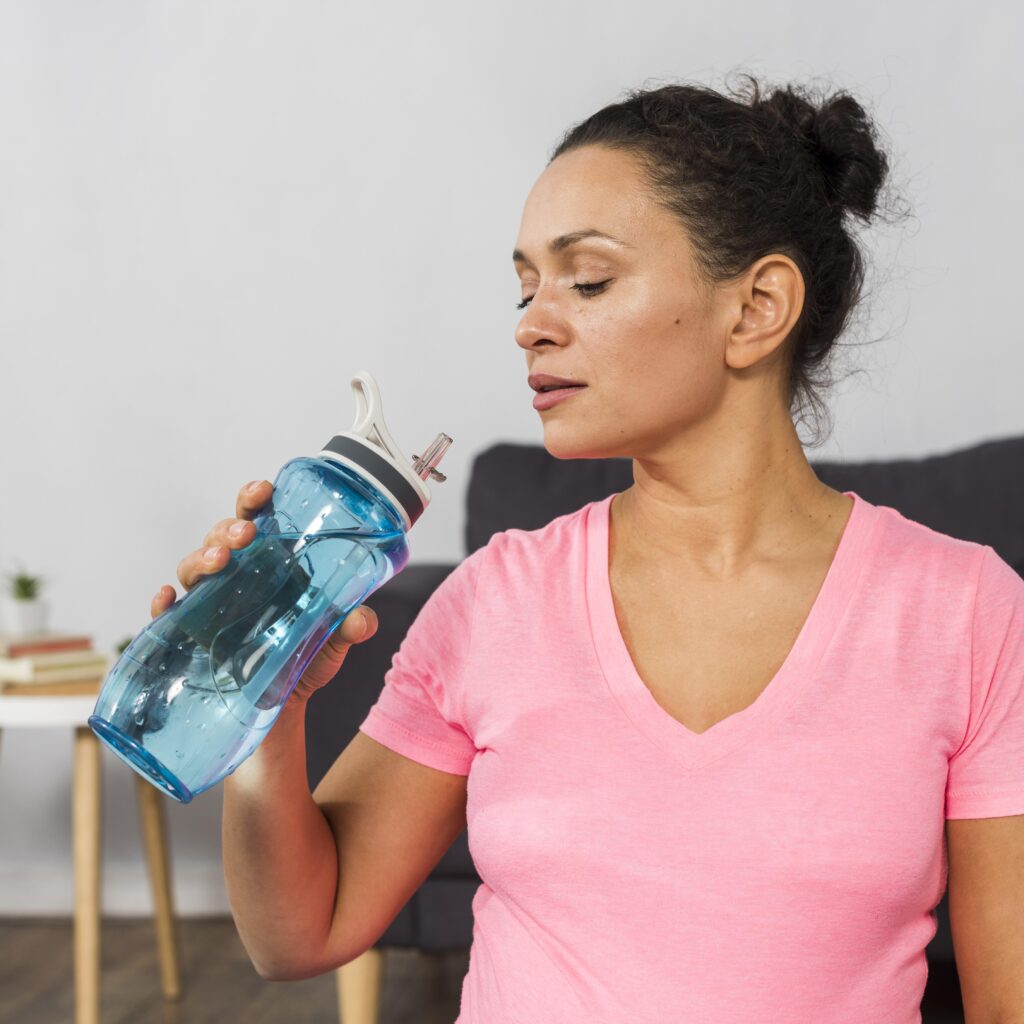Water is an essential element for our well-being, and understanding our daily intake is crucial. Have you ever wondered how many water bottles make up a gallon? Join us on a journey through liquid measurements and hydration wisdom to unlock the secrets behind this common question: “How many water bottles is a gallon?”

Understanding Liquid Measurements
In the world of liquid measurements, gallons and fluid ounces play a significant role. A unit of volume is represented by gallon in the U.S. customary and British imperial systems, while fluid ounces represent a smaller measure of liquid. Standard water bottles typically come in various sizes, with each marked in fluid ounces.
How many water bottles is a gallon?
To demystify this question, let’s delve into the math. A U.S. gallon consists of 128 fluid ounces. Considering standard water bottle sizes, which often range from 8 to 20 fluid ounces, we can determine the number of bottles in a gallon.
If we take a common 16.9-ounce water bottle as a reference, a gallon would comprise approximately 7.56 bottles. Understanding these conversions is not just about numbers; it’s a tool for ensuring you meet your daily hydration goals.
Daily Water Intake Recommendations
Health experts recommend a specific daily water intake to maintain optimal bodily functions. Knowing how many water bottles contribute to a gallon aids in keeping track of your consumption.

On average, adults are advised to consume around 64 ounces of water per day, equivalent to half a gallon.
Factors Affecting Water Bottle Count
Before committing to a strict water regimen, consider variations in bottle sizes. Some bottles might hold more or less than the standard, affecting your overall intake. Additionally, water density can slightly alter the count, emphasizing the importance of precision in measuring hydration.
Environmental Impact of Bottled Water
While staying hydrated is crucial, it’s equally vital to be mindful of environmental consequences. Single-use plastic bottles contribute to pollution, prompting a shift towards sustainable packaging options. Being aware of the environmental impact empowers individuals to make eco-friendly choices.
Hydration Tips and Benefits
Staying hydrated goes beyond the numbers. It’s about maintaining overall health. Proper hydration enhances bodily functions, improves skin health, and boosts energy levels. Consider your water intake as a personal investment in your well-being.
Popular Myths about Water Consumption
Dispelling myths is key to understanding proper hydration. The “8×8 rule,” suggesting eight 8-ounce glasses per day, is a guideline, not a strict requirement. Each person’s water needs vary, influenced by factors like age, activity level, and climate.
Practical Applications in Daily Life
Armed with the knowledge of water bottle quantities, integrate hydration seamlessly into your daily routine. Choose a bottle size that aligns with your lifestyle, whether it’s a compact 8-ounce bottle for short outings or a larger one for intense workouts.
Innovations in Water Packaging
As society gravitates towards sustainability, innovations in water packaging emerge. Eco-friendly materials like biodegradable plastics and reusable containers offer alternatives to traditional single-use bottles. Stay informed about evolving trends in water packaging.
Creative Ways to Meet Hydration Goals
Making hydration enjoyable can be a game-changer. Infuse your water with natural flavors by adding fruits or herbs. Explore hydrating foods like watermelon and cucumber to supplement your fluid intake. Transforming hydration into a delightful experience ensures consistency.
DIY Water Gallon Tracker
Create a simple tracker to monitor your daily water intake. Whether it’s a physical checklist or a dedicated app on your smartphone, visualizing your progress can motivate you to stay on track. Technology has made it easier than ever to receive reminders for regular sips.
Hydration Challenges and Solutions
Recognize and overcome common hurdles in maintaining hydration. Busy schedules, forgetfulness, or dislike for plain water can pose challenges. Combat these issues with strategies such as setting hydration reminders, infusing water with natural flavors, and finding a supportive community.
Community and Social Aspects of Hydration
Share your hydration journey with others. Engage in social media challenges, use hashtags related to hydration goals, and celebrate milestones together. Building a community fosters accountability and turns hydration into a shared, positive experience.
Conclusion
In conclusion, understanding how many water bottles constitute a gallon is more than a mathematical exercise. It’s a gateway to a healthier, more conscious lifestyle. By applying this knowledge, you not only meet your daily hydration needs but also contribute to a sustainable and mindful approach to water consumption.
FAQs
- How many water bottles should I drink per day?
- The recommended daily water intake varies but is generally around 64 ounces or half a gallon.
- Does the size of the water bottle matter?
- Yes, the size of the water bottle matters. Different sizes affect the total count, so choose a size that aligns with your hydration goals.
- Can I meet my hydration needs through other beverages?
- While other beverages contribute to hydration, water remains the healthiest and most straightforward choice.
- Are there apps to help track my daily water intake?
- Yes, numerous apps are designed to track daily water intake, providing reminders and visualizing your progress.
- How can I make drinking water more enjoyable?
- Infuse your water with fruits, herbs, or try hydrating foods to add flavor and make the experience enjoyable.
1 thought on “How Many Water Bottles Is a Gallon? Unraveling the Significance of Hydration”